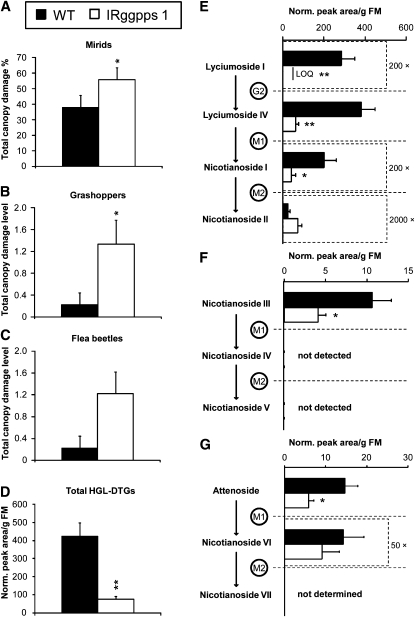Figure 8.
HGL-DTGs Reduce Damage from Generalist Herbivores in Nature.
(A) The most abundant herbivore in the 2008 field season, mirids caused significantly more damage on IRggpps line 1 than on wild-type plants in the field by May 16th (average + se; n = 9 pairs; *P < 0.05 in paired t tests).
(B) Grasshoppers caused significantly more damage on IRggpps line 1 by May 16th (average + se, *P < 0.05 in Wilcoxon's sign-rank test).
(C) Flea beetles tended to cause more damage on IRggpps line 1 at the beginning of damage measurements on May 8th; differences are not statistically significant (average + se, Wilcoxon's sign-rank test). Scale for less abundant herbivores in (B) and (C): damage level 0 = 0% total canopy damage; level 1, <1%; level 2, < 5%; level 3, 5 to 10%.
(D) to (G) Total HGL-DTGs (D) and concentrations of individual compounds (average + se; [E] to [G]) in undamaged systemic leaves harvested from pairs of the wild type and IRggpps line 1 on May 15th. Note that some compounds have been multiplied by constants to fit the scale of the graph and that scales change. *P < 0.05 and ** P < 0.01 in paired t tests.
LOQ, below limit of quantification.

